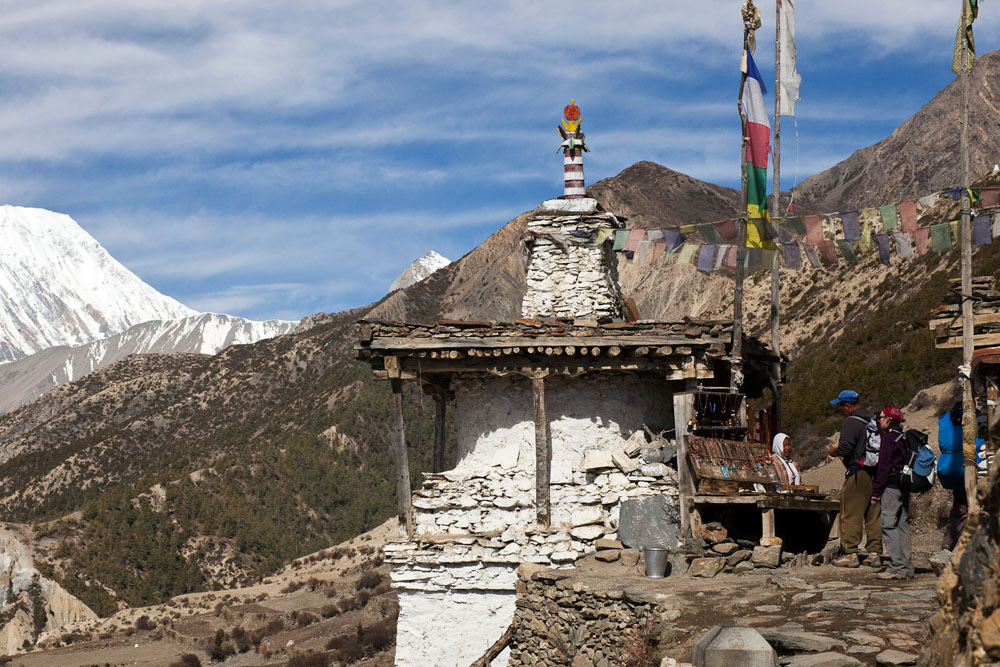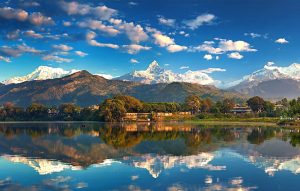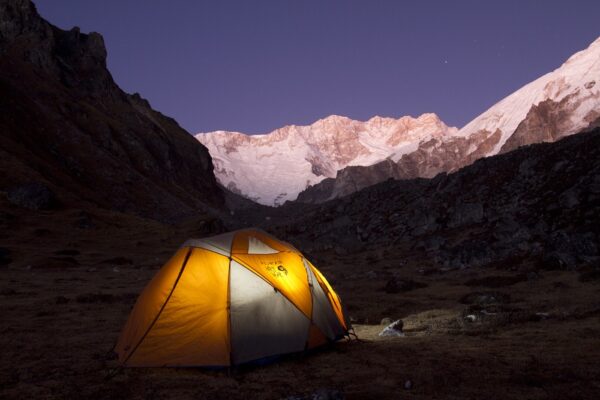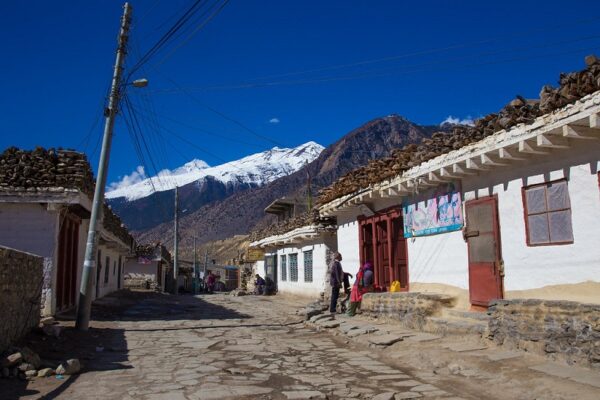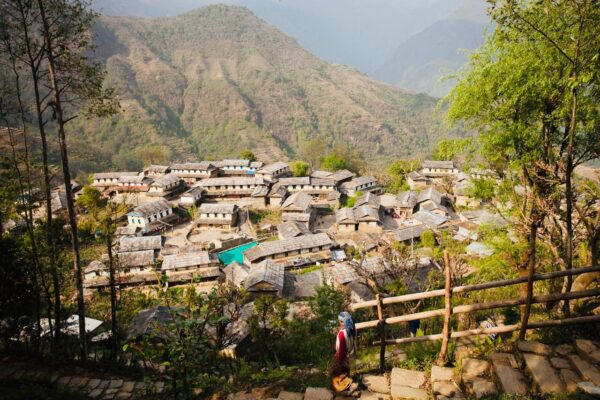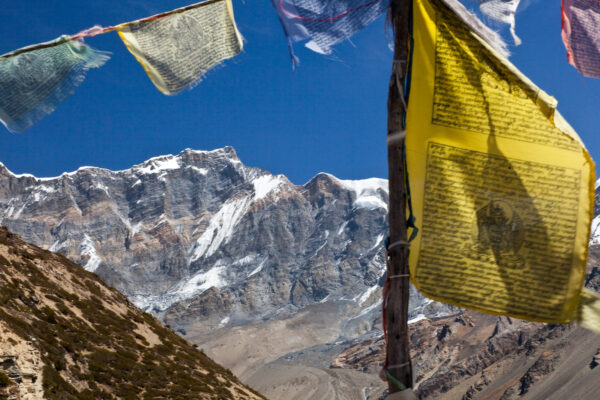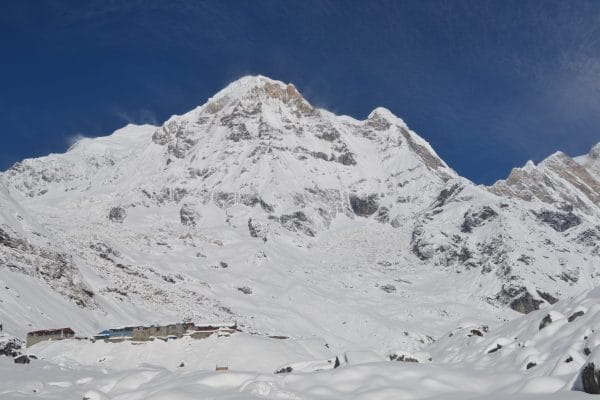-
trip code
TG103
- difficulty
Moderate
-
Trip Style
Group
-
Start in
Kathmandu
-
end in
Kathmandu
-
group size
1-20
-
max altitude
5,416 meters (17,769 feet)
-
Accommodation
Lodge,Tea Houses
-
Best Season
September, October, November and December and March, April and May.
Overview
Table of Contents
ToggleOverview of the Dhampus Australian Camp Trek
The Dhampus Australian Camp Trek is a short yet scenic route in Nepal’s Annapurna region, perfect for families, beginners, or travelers short on time. This trek combines panoramic Himalayan views, cultural encounters, and peaceful trails, all in just a few days. It’s ideal for those looking to experience the Himalayas without committing to a long expedition.
Highlights of the Dhampus Australian Camp Trek
The trek starts in Pokhara, one of Nepal’s most beautiful cities. From there, the trail leads through traditional villages, lush forests, and terraced hillsides. As you climb higher, you’re rewarded with incredible views of Annapurna South, Machapuchare (Fishtail Mountain), and other peaks in the Annapurna Himalaya.
The first destination is Dhampus, a traditional Gurung village known for its cultural charm. Here, you’ll meet locals, enjoy homestyle food, and observe their daily life. Next comes Australian Camp, a hilltop lookout point that offers one of the best sunrise views in the region. Imagine sipping tea while the morning light touches the snow-covered summits it’s unforgettable.
This route is gentle and suitable for all fitness levels. Along the way, you’ll see native flora, visit small Buddhist monasteries, and encounter Nepal’s warm hospitality. For those interested in local culture and nature, this trek offers the perfect mix.
Learn more about Pokhara or visit the official Nepal Tourism Board for nearby attractions and travel tips.
Why Choose the Dhampus Australian Camp Trek?
Cultural Experience: Get to know the Gurung community and their centuries-old traditions.
Annapurna Views: Enjoy stunning mountain landscapes, ideal for photographers and nature lovers.
Wildlife and Nature: Discover the biodiversity of the region, including birds, butterflies, and flowering plants.
Gentle Hiking: This short trek is perfect for travelers who want Himalayan scenery without strenuous climbs.
Great for Short Trips: With easy access from Pokhara, this trek fits well into any Nepal itinerary.
Extend Your Trekking Adventure from the Dhampus Australian Camp Trek
If you’re looking to explore more of Nepal, consider the Annapurna Skyline Trek (Royal Trek) or the classic Ghorepani Poon Hill Trek. Both offer additional views, longer routes, and diverse terrain.
Final Thoughts on the Dhampus Australian Camp Trek
The Dhampus Australian Camp Trek is a top choice for those who want the best of Nepal in just a few days. With striking mountain views, a touch of village life, and a relaxed pace, this trek is short, scenic, and truly satisfying.
Click here to see more treks in the Annapurna region and plan your adventure today.
Trip highlights
The Annapurna Three High Pass Trek is an amazing adventure, and the key to such expeditions is altitude management. With necessary precautions taken, proper acclimatization, and awareness of the symptoms, altitude sickness can be avoided, hence making this trek fully enjoyable with breathtaking beauty and adventure. So, prepare well and enjoy your trek through one of Nepal’s most stunning regions!
Thorong La Pass (5,416m / 17,769ft)
Highlights: This is the highest point in the trekking, but panoramic views of the Annapurna and Dhaulagiri ranges can be viewed.
Altitude Issues: Being the highest altitude, proper acclimatization must be done before crossing. One extra day at Thorong Phedi is better for acclimatization.
Kang La Pass (5,321m / 17,457ft)
Highlights: The pass offers great views and also provides a less-traveled route; hence, it’s among advanced trekkers’ favorites.
Watchful of Altitude: Much the same as Thorong La, proper acclimatization should be done. From Yak Kharka to Kang La, one needs to walk at a comfortable pace and keep an eye out for symptoms of altitude sickness.
Chulu West Pass (6,419m / 21,055ft)
Best view The highest pass of the trek, which requires more technical skills and proper equipment.
Altitude Considerations: This is a serious climb, and proper acclimatization and preparation is called for. Spend extra days in lower elevations to acclimate to the altitude.
itinerary
- day 1
Arrival Kathmandu (1,350m/4,429ft)
On arrival in Kathmandu. Preparation for treks, sightseeing, and getting permits and supplies. Overnight at the hotel in Kathmandu.
- day 2
Drive from Kathmandu to Jagat (1,300m/4,265ft)
A long drive from Kathmandu to Jagat via Besisahar along the Marsyangdi River takes around 6-8 hours of time. Overnight at a teahouse.
- day 3
Jagat to Dharapani (1,860 meters / 6,102 feet)
Trek through small villages and rice terraces with forests. The trail ascends gently to reach Dharapani. Trekking hours 5-6 hours
Overnight at teahouse. - day 4
Dharapani to Koto (2,610 meters / 8,563 feet)
The trail follows via several Tibetan villages, offering spectacular views of the Annapurna II, Lamjung Himal, and other peaks. Trekking hours: 5-6 hours, Overnight at teahouse.
- day 5
Koto to Meta (3,560 meters / 11,680 feet)
Begins the real trek to Nar Phu Valley along suspension bridges, and climb along trails into forests and gorges. Hours of Trekking 6 -7 hours. Overnight at a teahouse.
- day 6
Meta to Phu Gaon (4,080 meters / 13,386 feet)
This portion of the trail takes one into remote country, and stunning views abound-Kanguru, Himlung, among other high peaks. Walk through Tibetan villages with their infuriated guard dogs to cross the Nar Phu Khola to the west bank. Hours of Trekking 6 -7 hours. Overnight at teahouse in Phu Gaon.
- day 7
Acclimatization Day in Phu Gaon
Acclimatization Day. Rest and roam around Phu Gaon Village, visit the local monastery, and immerse into the cultural atmosphere of this Tibetan-influenced village. Overnight at Phu Gaon.
- day 8
Phu Gaon to Nar (4,110 meters / 13,484 feet)
A morning’s descent down the valley with several river crossings brings us upward again to the village of Nar. The road is quite pleasant as it offers serene views of Pisang Peak and other Himalayan giants. Trekking time: 5-6 hours. Overnight at a teahouse.
- day 9
Nar to Kang La Pass (5,306 m / 17,408 ft) to Ngawal (3,660 m / 12,007 ft)
Early start to cross the Kang La Pass. The pass offers incredible views of the Annapurna Massif. Down from the pass in a very steep descent to the village of Ngawal. Trekking hours: 7-8 hours Overnight at a teahouse.
- day 10
Ngawal to Manang (3,540 m / 11,614 ft)
A moderate trek through the old Tibetan villages, slowly making your way down to Manang, one of the most popular villages along the Annapurna Circuit. Trekking Hours: 4-5 hours. Overnight at the Tea House.
- day 11
Manang to Khangsar (3,760 meters / 12,336 feet)
The trail exits the Annapurna Circuit as you make your way towards Khangsar, the gateway village to Tilicho Lake. Trekking Hours: 4-5 hours. Overnight at the Tea House.
- day 12
Khangsar to Tilicho Base Camp (4,150 meters / 13,615 feet)
Catalog of Tilicho Base Camp via steep trail with spectacular surroundings, peaks, and glaciers. 5-6 hours of trekking Overnight stay at a teahouse.
- day 13
Tilicho Base Camp to Tilicho Lake (4,919 m/16,138 ft)
Tilicho Base Camp to Tilicho Lake (4,919 m/16,138 ft) cross Tilicho Pass (5,320 m / 17,454 ft), descend to Yak Kharka.
Boating day. Starts with an early climb upwards to Tilicho Lake, one of the highest altitude lakes in the world. From there on crossing Tilicho Pass offering spectacular panoramic views and culminates down at Yak Kharka. 8-9 hours of trekking Night in a teahouse. - day 14
Yak Kharka to Thorong Phedi (4,525 m / 14,842 ft)
More trekking upwards Marsyangdi River valley to Thorong Phedi, the last stoppage before Thorong La Pass. 4-5 hours of trekking Night to be spent at a teahouse.
- day 15
Thorong Phedi to Mesokanto La Pass (5,099m / 16,729 ft.)
descend to Jomsom (2,720m / 8,923 ft.) Cross the Mesokanto La Pass-the last of three passes. Cross it and descend toward the Kali Gandaki valley to finally reach Jomsom. 7-8 hours of trekking Overnight at a teahouse in Jomsom.
- day 16
Jomsom to Pokhara (820m / 2,690 ft.)
Jomsom – Pokhara (20 minutes flight) Free day at Pokhara, sightseeing in this lovely lake city, Overnight hotel stay in Pokhara.
- day 17
Drive back or fly to Kathmandu
Drive or fly back to Kathmandu (30-minute flight, 6-8 hour drive). Hotel stay overnight in Kathmandu.
- day 18
Final Departure to Home
Final airport departure from Kathmandu to your onward destination.
Not satisfied with this itinerary?
Make your own.Price Included
- Permits
- Annapurna Conservation Area Permit (ACAP)
- Trekkers’ Information Management System (TIMS) card
- Accommodation:
- Teahouse or lodge accommodations along the trekking route.
- Meals
- Breakfast, lunch, and dinner during the trek (usually local Nepali cuisine).
- Guides and Porters
- Services of an experienced trekking guide.
- Porters to carry your luggage (typically one porter for every two trekkers).
- Transportation
- Airport transfers in Kathmandu and Pokhara.
- Land transportation to and from the trekking starting point (Nayapul).
- Medical Kit
- Basic first-aid kit for emergencies (provided by the trekking agency).
- Emergency Support
- Arrangements for emergency evacuation in case of altitude sickness or injury.
- Group Gear
- Shared equipment like tents, cooking gear (if applicable), and dining tents (for camping treks).
- Local Taxes and Fees
- All government taxes and service charges
Price Excluded
- International Flights:
- Round-trip airfare to and from Nepal.
- Travel Insurance:
- Comprehensive travel insurance covering trekking activities, emergency evacuation, and medical costs.
- Personal Expenses:
- Snacks, beverages, and meals in Kathmandu or Pokhara not included in the trek.
- Tips:
- Gratuities for guides and porters (customary but not mandatory).
- Gear Rental
- Costs for renting trekking gear (if needed), such as sleeping bags or trekking poles.
- Visas
- Nepal visa fees (available on arrival or online).
- Additional Activities
- Optional excursions in Pokhara or Kathmandu (e.g., paragliding, sightseeing).
- Wi-Fi and Charging
- Charges for Wi-Fi and device charging in teahouses (if available).
- Alcohol and Luxury Items
- Costs for alcohol, hot showers, and other luxury items during the trek.
- Extra Days
- Costs for additional days spent in Nepal beyond the trek itinerary.
FAQ
-
What is Annapurna Three High Pass Trek?
Annapurna Three High Pass Trek is one of the most adventurous treks in Nepal that comprises awe-inspiring landscapes by crossing three high passes Thorong La, Kang La, and Chulu West. This trek offers great views of the Annapurna and Dhaulagiri mountain ranges with varieties of cultural experiences that can be shared with the local communities.
-
How difficult is the Annapurna Three High Pass Trek?
High altitude and multipart terrains are involved in this trek therefore, this trek is graded challenging. The trekkers should be in good physical condition and have some trekking experience. Proper acclimatization is a must to avoid altitude sickness.
-
What is the best time to trek the Annapurna Three High Pass?
It is best to trek in the spring season, starting from March to May, and in the autumn season, starting from September to November. These months offer stable weather with clear skies and mild temperatures, which really help during your trek.
-
How physically demanding is the altitude of this trek?
This is an above 6,000 meters altitude trek, specifically at Chulu West Pass at 6,419m. Proper acclimatization is needed by the trekkers, with knowledge of symptoms for altitude sickness, such as headaches and nausea. The gradient of ascent must be slow while having enough hydration.
-
Do I need a guide to do the Annapurna Three High Pass Trek?
While it is possible to go independently, it is generally recommended at least to hire a local guide. A local guide will more than gladly share his knowledge of the local culture, but he also will make sure that safety is guaranteed and he will be very useful in remote areas.
-
What permits do I need for the trek?
The two main permits required for trekkers are the Annapurna Conservation Area Permit (ACAP) and the Trekkers’ Information Management System (TIMS) card. These are available in Pokhara or Kathmandu.
-
What should I pack for the Annapurna Three High Pass Trek?
Basic things to be packed are waterproof trekking boots, warm clothing, a good quality sleeping bag, first-aid kit, and water purification system. Don’t forget trekking poles and a reliable back pack in which you will carry your gear.
-
Is the trekkings in Annapurna region safe?
Yes, the Annapurna area is safe for trekkers in general, but it is also always important to be up to date with weather conditions, local guidelines, and your health, especially concerning altitude sickness.
-
Is there any accommodation available along the way?
Yes, there are teahouses and lodges dotted along the entire route of the trek, offering basic accommodations together with meals. It comes highly recommended that one should book in advance during the peak seasons for trekking, so at least one secures a place.
-
How long does the Annapurna Three High Pass Trek take?
The trek generally takes 16 to 20 days, depending on your pace and acclimatization needs. This timeframe includes travel to and from
Write a review
Quick enquiry
Still confused?
Talk to our expert.

Kumar Dahal
USD 1890 / person
RELATED TRIPS
Dhampus Australian Camp Trek
Enjoy Dhampus Australian Camp Trek-a wonder of Mountain View along with rich cultural encounter. A beginner-friendly trek from Pokhara...
Sikles Trek
Sikles Trek in Nepal: An Unforgettable Journey Through Majestic Landscapes The Sikles Trek in Nepal offers adventurers a chance...
Jomsom Trek
Jomsom Trek: A Beautiful Trip Through the Himalayas The Jomsom Trek is a wonderful adventure that takes you through...
Royal Trek Days
The Royal Trek is a tantalizingly beautiful walk along the foothills of the Annapurna region, a region rich in...
Annapurna Balcony Trek Your Complete Guide to Stunning Views
The Annapurna Balcony Trek is one of those journeys that will remain etched in one's memory because it goes...
Annapurna Base Camp Trek
Embark on a unique trek that takes you past lush green forests, picturesque villages and terraced farmlands overlooking glacier...

